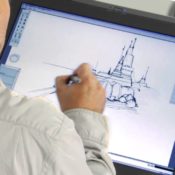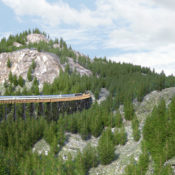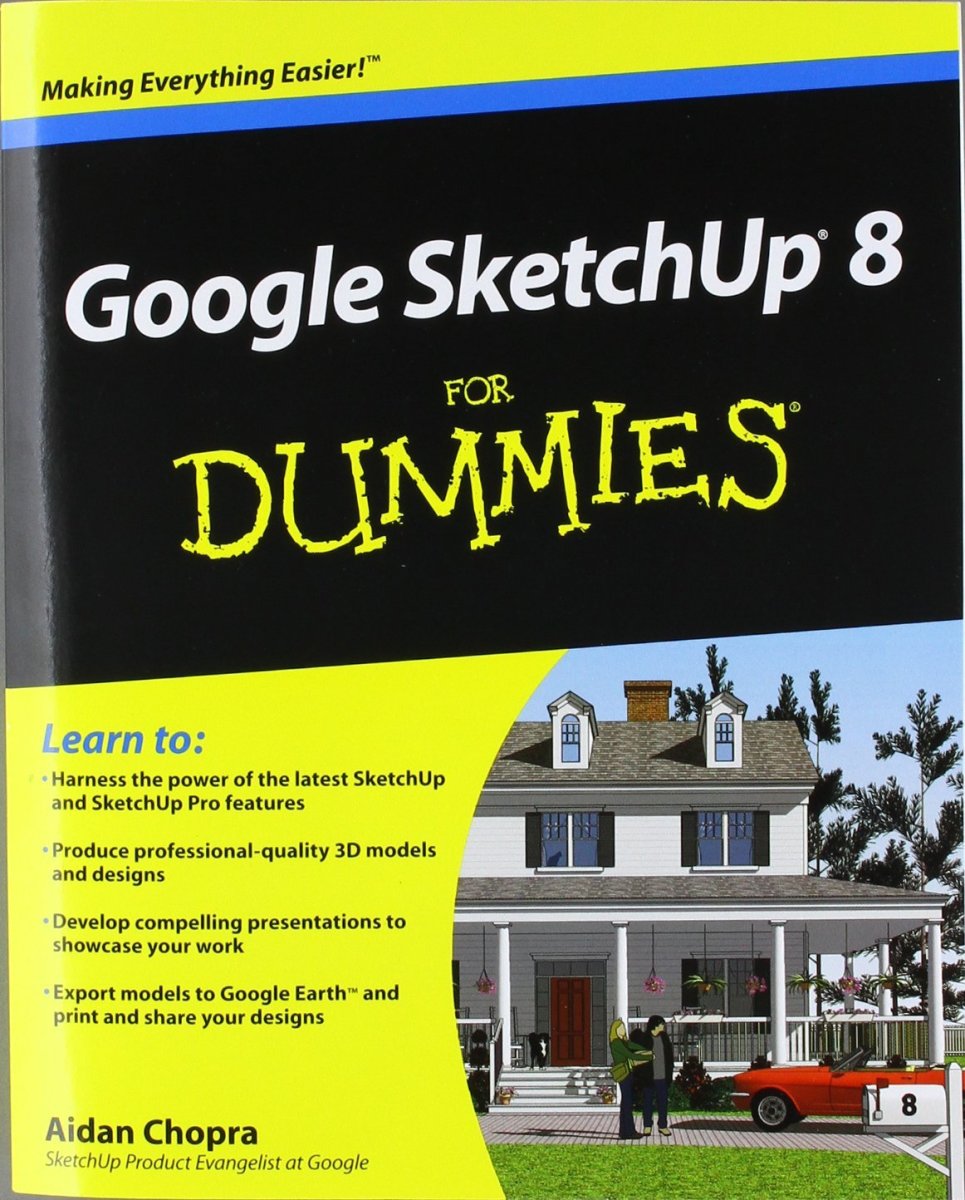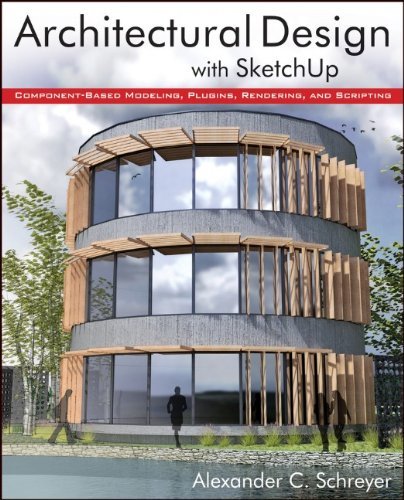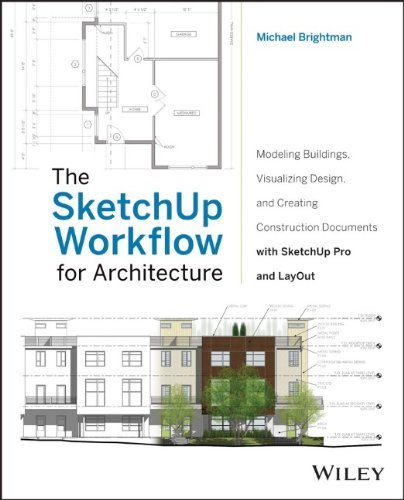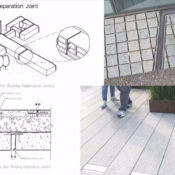Author: Jayson Wood
Tech Beat: A look at Digital Tablets and Styluses for Designers
With the development of Microsoft’s full Windows 8 interface added to digital Tablets this summer, Wacom unveiling their new pressure-sensitive stylus, and increased availability, digital tablets are strengthening their role in design offices across the country. Perhaps there is one in your office, or you have been on site when a fellow professional has scrolled through a drawing set. Initially, I was pretty out of the loop and would like to thank those of you who weighed in on the tablet discussion posted here. For me, it opened a never-ending Pandora’s box of additional questions and investigation that expands as fast as new products hit the shelf. It is my hope that we can continue to share and fully take advantage of state-of-the-art technologies. I’ve tried to summarize as best as possible below, but if you are investigating for the first time, like I was, I would suggest familiarizing yourself somewhere like here for some helpful background.
I began my voyage into tablet-dom a few years ago, using, at the time, an extremely expensive version of the Wacom Tablet. I quickly gave up the cumbersome pen and used the accompanying brush styles with a mouse to finish my work. Today, a variety of pen adaptions have hit the market and range in prices from $9.99 to $99. Perhaps the most important piece of information I’ve come across I found on Amazon.com: “Buyer beware, when buying Wacom pens online”. One need not read far into the reviews on Amazon to see that many purchasers have often ordered what they thought was a trust worth Wacom style pen, only to receive a cheap stylus that deteriorated quickly and provided terrible results. Be diligent; not only in your research to select a stylus, but as to its compatibility with the tablet you’ve selected. The most buzz worthy pens I found through reading and casual discussion are the Wacom Bamboo stylus and the Inuos Creative Stylus (available in October for $99). The Wacom Bamboo stylus stands as the industry standard where the Intuos is the revamped, renamed, newest version of the Bamboo with pressure sensitivity advertised as comparable to pen and paper.
Check this video for a breakdown of nine different available styluses, each with their own degree of limitations:
And a new advertisement for the Inuous Creative Stylus, with pressure sensitivity:
Also worth noting are the variability in the “nibs,” or pen tips that you choose. They are fairly inexpensive and it is advantageous to try broader and thinner tips, compare durability, and see which feels best to you. The video at the top shows the Adonit Jot Stylus as a thin-line tip model. There are a lot of hopes with the new Inuous Creative Stylus and its abilities, though in the released videos it still appears limited as a detailed sketching tool when compared with traditional mediums. Take the time to investigate the digitizer your tablet has so that you can rest assured that you chose the correct, compatible stylus for your approach. Styluses appear to be more of a rendering aid than a full on sketching tool; different digitizers allow for different tracing, sketching, and rendering capabilities. This is especially important with iPads and Dell tablets, as I have noticed forums with participants voicing displeasure with pens that don’t achieve the user’s desire, or are simply not compatible with the tablet they were purchased to be used on.
Also critical is selecting a tablet that is compatible with your office scheme. Using android phone, PC, and a tablet with Windows or Android interfaces versus using all Apple products, for example, provides for easy transfer and integration. Trying a variety to find what fits your situation best is key. Swing by Best Buy, an Apple Store, or Staples to try the Samsung Note 10.1, IPad, and Wacom Intuos Tablet. These have all received positive reports by sketching designers online.
At this time tablets can be purchased that have large amounts of RAM and storage space…allowing for SketchUp, AutoCAD, and full Adobe Suite use. The price tag naturally grows with adding these options.
Selecting a rendering App or program becomes another variable. On tablets with smaller amounts of RAM, Photoshop offers the “Touch” App available here, for around $10. Although it is far from the true version it is worth exploring. Apple released the Bamboo Paper App for sketching and jotting notes a few years ago and a revamped version is now available that was created for the Inuous Creative Stylus which will be available in October. But why limit yourself: check out these sketch Apps and render a fresco painting or if you have the opportunity, try Wacom’s Inkling (video below) for a more traditional process and share your findings with us.
A good old fashioned pros and cons list or an honest look at what you hope to achieve will help you make the right selection.
Keep the discussion going! Let us know if you give any of these a try and feel free to show some examples!
10 SketchUp Resources for Landscape Architects
With the follow-up to Daniel Tal’s 2009 book,”Rendering in SketchUp,” hitting stores last week, Land8 continued its Webinar series with Daniel Tal showcasing SketchUp Pro’s new layout space and the improved interfacing between SketchUp Pro and AutoCAD. Much like Daniel Tal’s book series offers a holistic foundation for SketchUp success, this post provides Tal’s book recommendations and technical references.
As we have learned over the past few months, Daniel Tal helps beta test SketchUp releases and provides keen insight to developers. As SketchUp’s new additions push to compete with more realistic, highly detailed, and dimensional programs like Revit, Maya, Rhino, and even AutoCAD’s rendering cloud, Daniel’s presentation suggests we have a lot to look forward to. With the release of his new book, Daniel cements himself at the forefront of SketchUp educational documentation. Helping users illustrate their design through understanding SketchUp and identifying plugins that will best convey their intention to the amazement of their clients and the benefit of the profession.
SketchUp Books
Along with both of Daniel’s books, here are a few more recommendations for those interested in building their Sketchup abilities and personal library:
SketchUp Rendering Software
During the series Daniel also recommends some great post-production rendering programs. Below is a list of his recommendations to help you take your model to the next level! Although these programs all work best with some Photoshop post-production. (Please note that some of these are “ruby scripts” (SketchUp lingo for “plugins”):
Shaderlight – a rendering plugin for SketchUp Pro and the free version. Comparable to Maya and Revit for photo-realism; features cloud based rendering and network licensing, Available free for a 14-day trial
Twilight Render – a rendering plugin exclusively for SketchUp, somewhat photo-realistic, allows users to run rendering program in the background as they develop their model, saving them time.
Thea Render -a rendering module, quite photo realistic post-rendering, works with most model types through multiple plugins.
Lumion -a rendering module that can render any model type (Revit, Maya, etc.) in 3-6 hours
Podium – a super simple and easy photo-realistic rendering plug-in for SketchUp Pro. Trials and tutorials make it easy to learn how to edit your model in place adjusting the plugin’s final render quickly.

SketchUp Resources
Some great resources for components were mentioned in the webinar series. For your convenience they are listed here. I highly encourage you to share any you’ve come across in the comments scroll below. The more we share, the more we can grow!
3D Warehouse -this first resource for SketchUp users now features trees and elements by Shaderlight, which interface nicely if you are using Shaderlight to render your 3D model.
FORMFONTS – the “GeomeTrees” found in this online database are trees with a low amount of faces but a high amount of texture, allowing for a great amount of manipulation without slowing your computer’s processing speed.
Use the following link and reference Land8 to receive a 25% Discount on membership: formfonts.com/community/L8L
Dynascape – this site features highly editable plants listed by latin name. Check out the site to join more tutorials with Daniel Tal. Interfaces well with Shaderlight.
SketchUcation – an online forum, training center, and file sharing website dedicated to providing great information, components, and plugins to its members.
Vine Models – Daniel Tal was kind enough to provide a link to download some of his personally developed vine models. Click here to download them for your personal library.
To summarize, the SketchUp Webinars have provided a great foundation for those hoping to delve deeper into SketchUp as a 3D tool. Daniel’s recommended layer organization tricks and use of ruby scripts allows you to intelligently manipulate and build your model with minimal lag-time. His use of “instancing” (using a combination of 3D and wire-frame trees to create a component) and “scenes” to toggle layers on and off, is nothing short of brilliant; especially if you’ve ever spent an exhausting night on SketchUp battling its sluggish tendencies. Be sure to check out the ruby script “selection toys” to keep your layers organized and working smoothly. There are plenty more of these tips and tricks in Daniel Tal’s newest book available here.
For more information and to learn how to add backgrounds to your SketchUp model, enhancing depth and realization, check out Land8’s Webinar Archive for the full lesson!
What is your favorite SketchUp resource, software, or ruby script? Feel free to leave a comment below…
—
Like construction details? Check out my last post Design Library: 6 Books on Construction Details
Design Library: 6 Books on Construction Details
The Land8 Webinar: Forgiving Landscape Details and Detailing for Ease of Construction featuring Thomas Ryan provided a much needed look at the adapting field of detailing. Details are a Landscape Architect’s bread and butter. Consideration, intuition, and final construction are why we’re hired. The material and design consideration for a simple detail can be mind-boggling and very in-depth; But you have to set the first brick to build Rome–and that brick, it turns out, is 3/8″ inch smaller in each direction.
To expand your library further, I have found the following books inspirational (beyond Time Saver Standards):
 Detailing for Landscape Architects: Aesthetics, Function, Constructibility
Detailing for Landscape Architects: Aesthetics, Function, Constructibility – by Thomas R. Ryan
Thomas Ryan’s book wraps many of these considerations up nicely and, in my opinion, should be issued with every Landscape Architecture Diploma. His illustrations provide a walkthrough for those wishing to strengthen their detailing ability. Much like “Time Saver Standards,” Ryan provides a great foundation for satisfying the integration between design and construction, in a new and improved way, considering tolerances, aesthetics, and climate. It’s encouraging to know that we’ve come so far in this niche of the profession. This book should be an open and used addition to every firm’s library, especially if they wish to have lasting, strong, successful built projects.
 Detail in Contemporary Landscape Architecture
Detail in Contemporary Landscape Architecture – by Virginia McLeod
Through focusing on different highly detailed projects from Australia to Canada, this book uses a number system and accompanying cd-rom to reveal basic, progressive, and avant garde detailing. The book features fantastic pictures and descriptions.
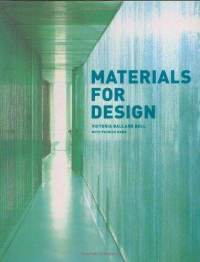 Materials for Design – by Victoria Ballard Bell and Patrick Rand
Materials for Design – by Victoria Ballard Bell and Patrick Rand
By using famed designs across the globe this book features sections on glass, metal, concrete, and much more. It focuses primarily on Architectural constructs but is easily translated to the built landscape.
 Living Systems- Innovative Materials and Technologies for Landscape Architecture – by Liat Margolis and Alexander Robinson
Living Systems- Innovative Materials and Technologies for Landscape Architecture – by Liat Margolis and Alexander Robinson
For those with sustainability at heart, this book provides incredible detailing, pictures, and descriptions of projects that feature sustainable materials you probably never knew existed. Many of the designs provide enhanced ecology and make participants aware of function while maintaining fantastic aesthetic. The book is written in an article fashion and is an inspiring and enjoyable read.
Thomas Ryan conveyed that communication is key. The more we share, the more we can dial in our budgets and increase our material success. He recommended two books during the webinar – Brick in the Landscape: A Practical Guide to Specification and Design and Wood in the Landscape: A Practical Guide to Specification and Design. Perhaps you have some recommended books you have found on detailing and construction? Please provide them below.


